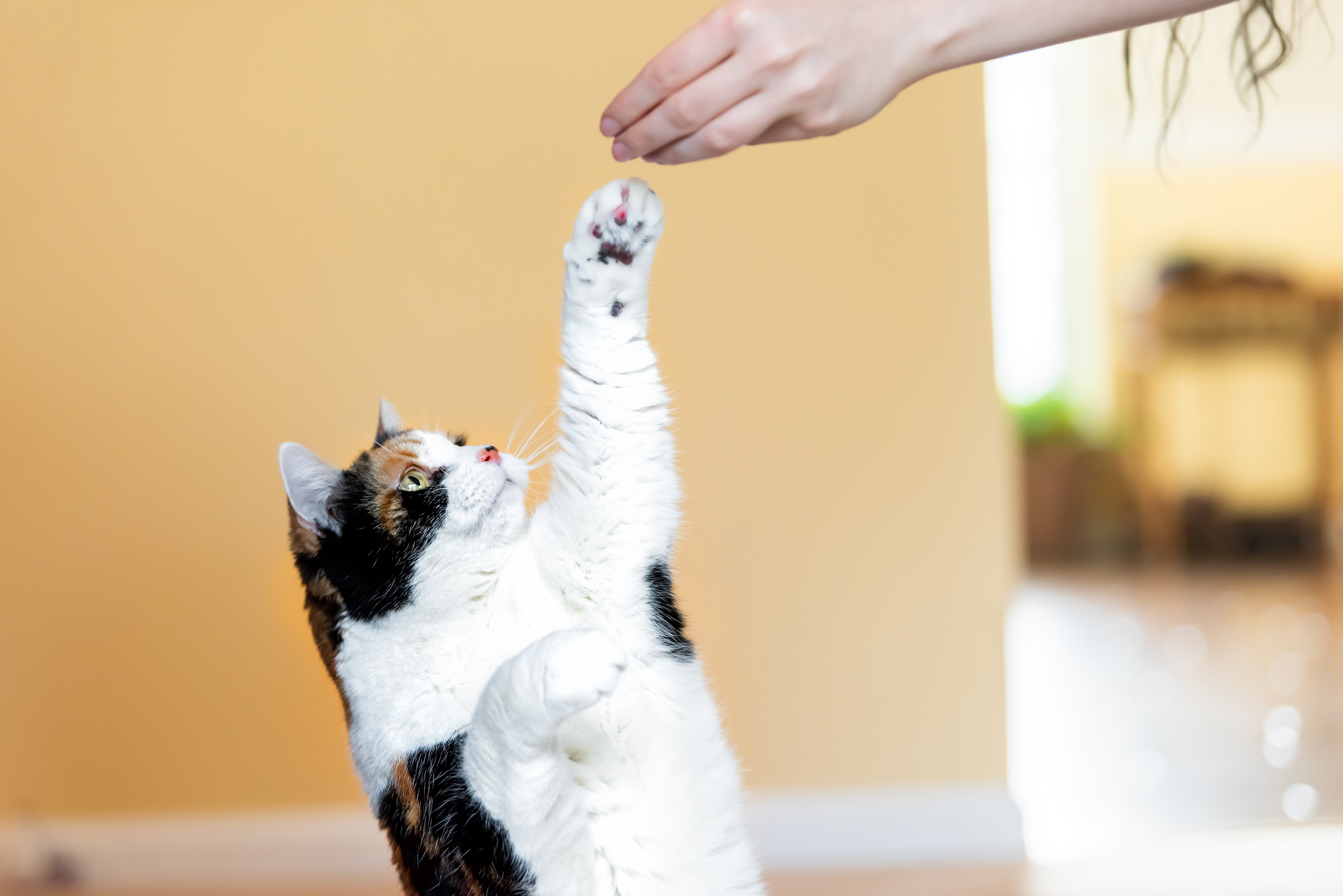
Is it Possible to Train a Cat Like a Dog?
When you hear the word “training” in reference to pets, you probably think about training dogs. And, as the old saying goes, “You can’t teach an old dog new tricks.” But what about cats? Can they be taught and trained, too?
A lot of pet owners mistakenly believe that cats cannot be trained. Much of this is derived from the belief that cats are stubborn and too independent to be trained easily. However, with patience and the right forms of motivation, many cat owners can be successful in teaching their feline friends a command or trick.
Cats can learn tricks, too!
A lot of cat owners don’t think to train their cats until it’s too late to do so easily. Cats are similar to dogs in that they are more easily trained at a young age. If your cat has free rein and no concept of commands for five years, it’s natural for it to take longer for them to grasp the concept!
It’s true that cats don’t have the same inclination toward following instructions as dogs do. But really, cats can be trained to do almost everything a dog can. The key differentiator will be what you use to train your cat, since they often have different motivations than dogs.
For most cats, positive encouragement and petting will not be nearly as effective as it is for dogs, but treats and tasty things are much more of an incentive. To avoid feeding your cat too much, you may want to use some of their everyday kibble as “treats” during training, which you can just take out of the pre-measured portion in their bowl. Feeding right before mealtime using kibble can also be extremely effective, since your cat will be hungry and eager to eat.
Additionally, many cats will respond well to training if you start by training them on things they want or like already. For example, you might be able to teach your cat to fetch by using their favorite toy they love to chase.

Tips for training cats
Training a cat requires patience and persistence above all else, but certain things can make the process easier. While training your cat, keep these tips in mind:
- Be patient: Patience is the most important thing while training a cat. Experts say it takes at least three training sessions for a cat to really begin to understand a command or trick that’s requested of them. This will mean a lot of repeating yourself and giving rewards, but eventually, all that work will pay off! If they aren’t getting it, don’t give up on your cat too soon. Persistence is key to achieving the results you want.
- Use a clicker: Cats should be rewarded for the action you want them to perform immediately in order for them to create a link between the behavior and the reward. Using a clicker alongside treats—and, eventually, instead of them—can ensure your cat receives a “reward” at the right time. Start by creating a link between the clicker and a reward by clicking and giving your kitty a treat. Over time, your cat should understand that a click equals a reward.
- Take baby steps: Because cats are a little slower to pick up on commands and tricks than dogs are, you’ll want to train them incrementally. Break the desired behavior up into small segments and teach them one at a time. For example, if you want your cat to walk using a harness and leash, you first need to get them to accept wearing the harness and feeling the weight of the leash. Only then can you move onto other aspects like following your lead while on leash.
- Don’t scold or punish: Scolding or punishing your cat when they don’t perform a command as they should will never be effective during your cat’s training. In fact, it can do even more harm by stressing your cat out and making them unwilling to train out of fear. Instead, you should always provide positive reinforcement in whatever way is most effective for your kitty—whether that’s treats, extra kibble or praise.
- Keep training short but persistent: Most cats won’t have the patience or attention span to train for long periods of time. Instead, keep training sessions short—around 10 minutes—and only conduct them once or twice per day. However, make sure you’re staying consistent with your training sessions throughout the week to engrain the command into your cat’s habits. Focus on one trick or command at a time until your kitty has mastered it. When you’re not actively training your cat, give them puzzle toys or other mentally stimulating activities to keep their brains active and healthy.
Training your cat isn’t only about getting them to perform cool tricks. It can also be an effective method of minimizing behavioral problems at home and even keeping your cat safe if you take them out in public. Throughout the process, just remember to give your pet time to learn and reward them for their efforts. Eventually, your patience will pay off!


